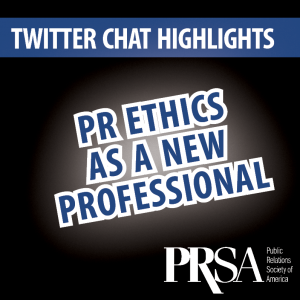Spending a vast amount of money on PR campaigns can make good sense if by doing so you are able to establish and maintain a desirable public image that helps to attract new customers and to retain old ones. However, it is not an activity that should be carried out in isolation, but rather something that should form part of an overall marketing strategy, including the interior design of your corporate headquarters.

Image Credit: Legozilla, license (click for source)
Many business owners may feel that office design has very little to do with their public relations campaigns but if you want to make sure that your target audience does not perceive your PR activities to be nothing more than smoke and mirrors, it is a good idea to reinforce the image you are trying to project with something tangible such as the colour scheme and layout of your head office.
Visitors to your headquarters cannot help but be influenced by what they see and their perception of your organisation is very likely to be coloured by the décor of your offices. The following design tips should help to ensure that this is a positive and not a negative.
Corporate colours – if you have made a big effort to get potential customers to associate your company with a particular logo, you should seriously consider using the colours that appear in that logo when deciding on colour schemes for your office interiors.
In particular, an impressive reception area painted in your corporate colours is sure to make a good impression on visitors and leave them in no doubt that yours is an organisation that stands behind its advertising slogans 100%.
An appropriate layout – if you spend a great deal of money in an effort to convince people that yours is a forward thinking company where corporate hierarchies have been swept aside in favour of a more inclusive working environment that is conducive to innovation and the rapid evolution of new products, you need to back this up with your office layout.
If visitors to your headquarters are met with closed doors and lifts to executive floors that can only be accessed with a special proximity card, which only the chosen few are issued with, there is a very good chance that they are going to start to question everything that your marketing campaigns have tried to establish as fact. Do not confuse your customers by sending mixed messages about what your company stands for and how it likes to operate.
Relevant themes – if your organisation is making a big push to sell its products to environmentally aware consumers who are genuinely concerned about the effect that their activities have on the natural world, this is something that can be carried through to the interior design of your offices. Instead of having panoramic windows that frame impressive views of the local countryside or cityscape, consider going for a more sustainable design with less glass, which will be cheaper to heat in the winter and to keep cool in the summer.
Many organisations make the mistake of trying to dazzle their visitors with the magnificence of their corporate headquarters when in reality all they are doing is demonstrating their lack of consideration for what really matters in life.
As you can see, the way that you choose to decorate your offices and how they are laid out could have a big effect on how your customers and members of the public in general perceive your business.
Always remember that actions speak louder than words so what your company does is just as important as what is says.
Author: Juliet Martin is writing for Saracen Office, one of the leading Commercial office Refurbishment Experts within the UK.



 Murewa Olubela is the Founder of The Single Story Foundation and was a past PRSSA Chapter President at the University of South Florida. Connect with her on
Murewa Olubela is the Founder of The Single Story Foundation and was a past PRSSA Chapter President at the University of South Florida. Connect with her on  I wandered but never faltered, and always felt like I was exactly where I needed to be. I know a lot of young professionals don’t feel that way. Maybe PR wasn’t even your first choice. Some of the best PR pros I know fell into the industry by accident.
I wandered but never faltered, and always felt like I was exactly where I needed to be. I know a lot of young professionals don’t feel that way. Maybe PR wasn’t even your first choice. Some of the best PR pros I know fell into the industry by accident. Audrey LaBenz is a freelance marketing and public relations consultant from Los Angeles, CA. She earned her bachelor’s degree from Cal State Long Beach in 2013 and has been working PR since 2009. She spends most of her off time designing costumes, hiking with her dogs and learning to spin flaming objects.
Audrey LaBenz is a freelance marketing and public relations consultant from Los Angeles, CA. She earned her bachelor’s degree from Cal State Long Beach in 2013 and has been working PR since 2009. She spends most of her off time designing costumes, hiking with her dogs and learning to spin flaming objects.  Growing up in the whirlwind of social media, many young professionals find this area as one of their specialties. It’s almost inevitable that in today’s industry you’ll be involved with social at some point in your career. However, even if you rock at social media, there’s hurdles you may face as a young professional when dealing with execs, clients or the business side of the company.
Growing up in the whirlwind of social media, many young professionals find this area as one of their specialties. It’s almost inevitable that in today’s industry you’ll be involved with social at some point in your career. However, even if you rock at social media, there’s hurdles you may face as a young professional when dealing with execs, clients or the business side of the company. Ashleigh Mavros is a graduate of the E.W. Scripps School of Journalism at Ohio University and works in public relations at Fahlgren Mortine, a fully-integrated agency in Columbus. She is a member of the Central Ohio PRSA Programs Committee. Connect with Ashleigh on Twitter at
Ashleigh Mavros is a graduate of the E.W. Scripps School of Journalism at Ohio University and works in public relations at Fahlgren Mortine, a fully-integrated agency in Columbus. She is a member of the Central Ohio PRSA Programs Committee. Connect with Ashleigh on Twitter at 